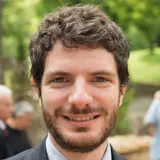Climate change affects us all and we all have a role to play. Our engineers are part of a King’s wide, interdisciplinary effort to tackle one of the greatest challenges of our age
Professor Barbara Shollock, Head of the Department of Engineering
01 November 2021
King's Engineering and climate change
How research in King's Department of Engineering is addressing climate change

Climate change is in the spotlight this week as world leaders meet in Glasgow for the COP26 conference.
King’s Head of the Department of Engineering, Professor Barbara Shollock, gave us a run down of some of the research that our Engineers are undertaking to help address the COP26 goals from reducing reliance on fossil fuels, to moving forward vehicle electrification.
Shifting from fossil fuels requires understanding of new energy sources and systems. The self-heating of biomass can start fires. Research to improve understanding of the ignition criteria for self-heating ignition can help with the transformation of coal power plants to biomass burning. [Francesco Restuccia].
Finding ways of integrating renewable energy sources into the electrical grid can reduce reliance on fossil fuels. Research funded by the EPSRC aims to devise approaches to overcome the unpredictable patterns of wind and water-generated energy to mitigate effects that may be a roadblock to renewable energy in the future. In addition, tidal energy is relatively expensive. Our recent work on tidal energy integration underpins investment in this resource. [Grazia Todeschini]
We are working with the UK Atomic Energy Authority under the national priority ExCALIBUR programme to develop a novel, high-performance framework for the simulation of fusion plasmas. This modelling capability is supporting the vision of UK-based commercially viable nuclear fusion reactors, a key aspect of achieving independence from fossil fuel usage. [Dave Moxey]
Our research on how waste can be converted to energy means building a fundamental understanding of the microbiome underpinning the bioreactors for waste-to-energy recovery. The approach incorporates new experimental results into data-driven modelling to optimise scaled-up new technologies to shift manufacturing to zero-carbon systems. [Miao Guo]
Renewable energy sources, such as solar, wind and tidal, require energy storage. Research has been developing scalable, low-cost sodium ion batteries for storing electrical energy generated by renewable sources to accelerate the phase-out of coal-generated electricity. [Ann Huang]. We are also are beginning work on thermo-electric generators to increase heat recovery from existing energy systems, making use of an untapped energy source. [Francesco Restuccia]
As part of an EPSRC Prosperity Partnership with Jaguar Land Rover we are working on thermal optimisation for improving battery energy density, as well as battery safety, for electric vehicles, through understanding fire risk, fire propagation, and possible ways to prevent, detect, and suppress battery fires alongside work in battery modelling, power electronics and improving electric drive trains. [Barbara Shollock]
Research on electric vehicle charging stations looks into ways to integrate renewable generation, energy storage and charging of electric vehicles. Our design allows for the charging of electric vehicles in areas where the electrical grid is weak or absent such as national parks and other remote areas. We are also developing new materials and manufacturing technologies for lithium-based batteries and next generation batteries for electric vehicles. [Ann Huang]
Our expertise in smouldering combustion provides an understanding of the risks that come with deforestation in countries like Indonesia and how it leads to further smouldering fire spread, offering evidence on the importance of reducing deforestation. [Francesco Restuccia]
As part of our mathematical modelling research, we couple machine learning and biogeochemical simulation to optimise multi-functional land use for novel yet resilient solutions. This means identifying the ideal locations for activities including local protein production hubs and optimising rooftop locations for urban farming, renewable energy infrastructure, and drone and air taxi bases. [Miao Guo].




